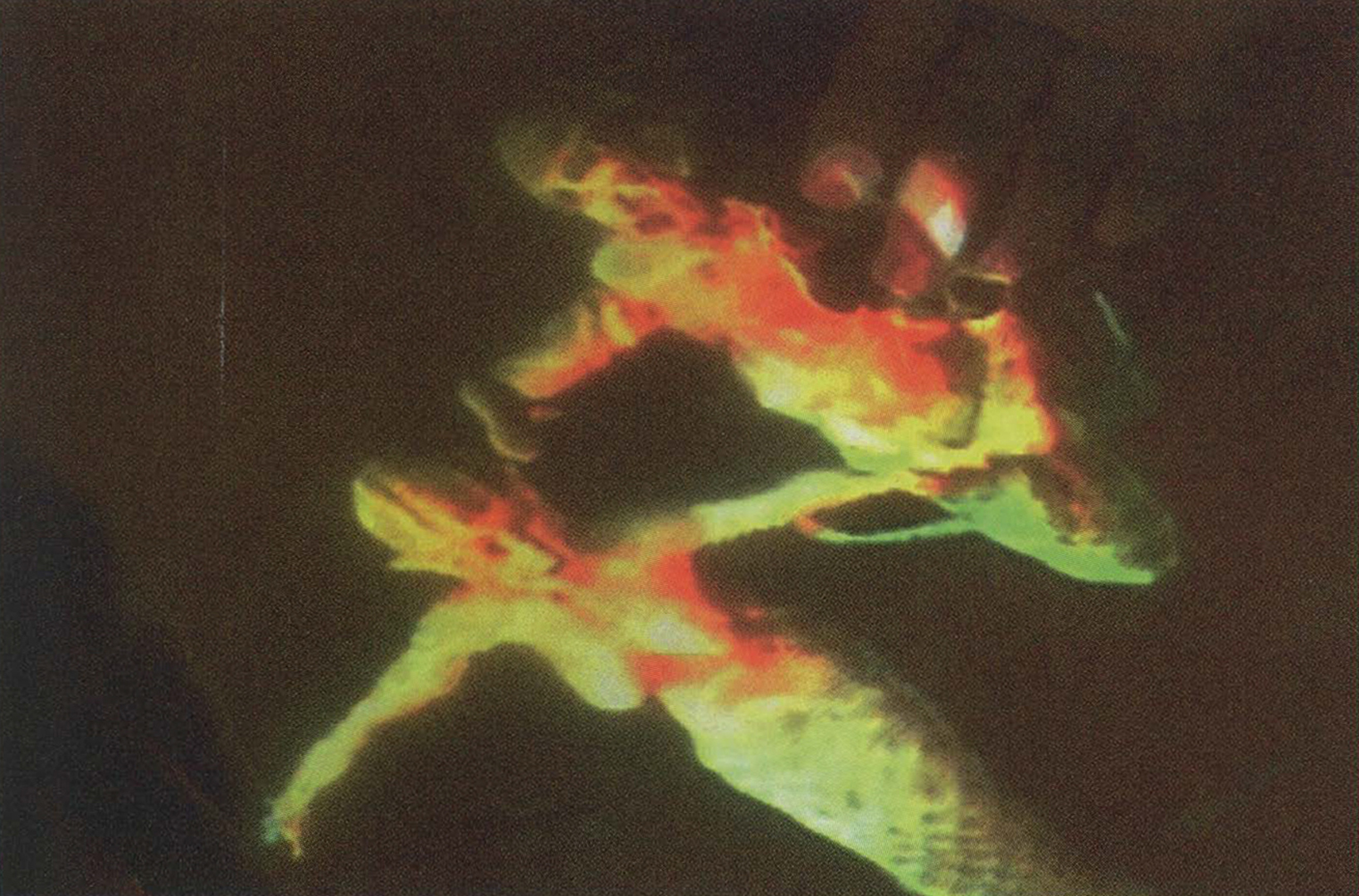Naoko Tosa: Unconscious Flow
Artist(s):
Title:
- Unconscious Flow
Exhibition:
Creation Year:
- 1999
Medium:
- Interactive Installation
Size:
- 5 X 5 X 5
Category:
Artist Statement:
In face-to-face communication, the occasional need for intentional lies is something with which everyone can identify. For example, when we get angry, circumstances may force us to put on a smile instead of expressing our anger. When we feel miserable, good manners may dictate that we greet others warmly. In short, to abide by social norms, we consciously lie. On the other hand, if we consider the signs that our bodies express as communication (body language), we can say that the body does not lie even while the mind does.
Unconscious Flow “touches the heart” in a somewhat Japanese way by measuring the heartbeat of the “honest” body and using other technologies to reveal a new code of non-verbal communication from a hidden dimension in society. The artist calls this “techno-healing art.”
Two computer-generated mermaids function as individual agents for two viewers. Each mermaid agent moves in sync with the heart rate detected by an electrode attached to the collarbone of its viewer. Then, using a synchronization interaction model that calculates the mutual heart rate on a personal computer, the two mermaids express hidden non-verbal communication. The data of relax-strain calculated from the heart rate and the interest calculated from the variation in the heart rate are mapped on the model. The synchronization interaction model reveals the communication codes in the hidden dimension that do not appear in our superficial communication. For example, when two persons are in a situation where they are highly strained and highly interested, they are assumed to have stress and feelings of shyness, and the animation generates CG-reactive embodiments that behave shyly. When both people are in a situation where they are highly strained and less interested, unfriendly communication is generated.
For a high degree of synchronism, the agents mimic the hand gestures of their subjects. For a low degree of synchronism, the agents run away. When one mermaid agent touches the other, a pseudo-touch can be felt through a vibration device. For background sound, the heart sounds of the subjects are picked up by an electronic stethoscope and processed for output on a personal computer.
Other Information:
Supported by SONY-Kihara Research Center, Inc.
All Works by the Artist(s) in This Archive:
- Naoko Tosa
-

Hitch-Haiku
[SIGGRAPH 2007] -

Hitch-Haiku
[SIGGRAPH 2007] -
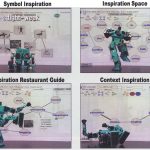
Inspiration Computing Robot
[SIGGRAPH 2005] -
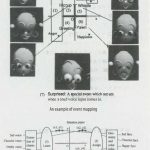
Neuro Baby
[SIGGRAPH 1993] -
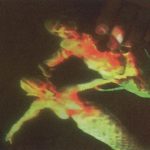
Unconscious Flow
[SIGGRAPH 1999] -

Energy
[SIGGRAPH 1987] -
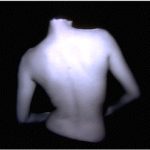
Ecstacy
[SIGGRAPH 1987] -

Visual Buddha
[SIGGRAPH 1986] -

Sound Ikebana
[DAC Online Exhibition 2016]

